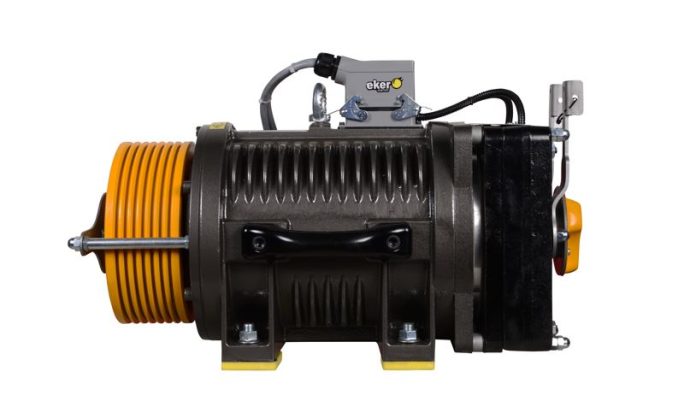A gearless motor is an innovative type of motor that operates without the use of traditional gears. Unlike conventional motors, which rely on gears to convert rotational energy, gearless motors are designed to directly generate rotational motion, offering numerous advantages in various applications. These motors are known for their efficiency, reliability, and ability to provide smooth and quiet operations. In this article, we will explore the benefits, working principle, and key applications of gearless motors.
What is a Gearless Motor?
1. The Working Principle
A gearless motor operates without the need for gears to transfer motion. Instead, it uses direct drive technology, where the motor’s rotor is connected directly to the load. This direct connection eliminates the need for intermediate mechanical components such as gears, belts, or pulleys. The result is a simpler and more efficient system with fewer moving parts, reducing the risk of wear and tear over time.
2. Components of a Gearless Motor
Gearless motors are typically composed of:
- Rotor: The rotating part of the motor, which is directly connected to the load.
- Stator: The stationary part of the motor that generates a magnetic field to interact with the rotor.
- Controller: The device that regulates the operation of the motor, ensuring that it runs efficiently and within desired parameters.
The absence of gears in these systems reduces mechanical losses, leading to higher efficiency compared to gear-driven counterparts.
Advantages of Gearless Motors
1. Higher Efficiency
One of the major benefits of gearless motors is their high efficiency. Since they don’t rely on mechanical gears, there is less friction, leading to lower energy consumption and reduced heat generation. This makes them an ideal choice for applications where energy efficiency is a priority.
2. Quiet Operation
Gearless motors operate much quieter than traditional gear-based motors. The absence of gears means there are fewer vibrations and less noise during operation. This makes them particularly useful in environments where noise reduction is crucial, such as in residential buildings, hospitals, and libraries.
3. Low Maintenance
With fewer moving parts, gearless motors require less maintenance compared to gear-driven motors. There are no gears to wear out or lubricants to replace, which results in lower maintenance costs and less downtime for repairs. This makes them a reliable and cost-effective solution for long-term operations.
4. Compact and Lightweight
Gearless motors are generally more compact and lightweight compared to their gear-driven counterparts. Their simplicity and direct drive design make them suitable for applications where space and weight are important considerations, such as in electric vehicles and portable equipment.
Applications of Gearless Motors
1. Elevators and Lifts
One of the most common applications of gearless motors is in elevators and lifts. In these systems, gearless motors provide smooth and efficient movement, reducing the need for large mechanical components that would otherwise take up valuable space. The direct drive system allows for faster and more reliable performance, making it a popular choice for modern buildings.
2. Electric Vehicles
Gearless motors are also used in electric vehicles (EVs) to provide efficient power transmission without the need for a traditional transmission system. These motors help reduce the weight and complexity of EV powertrains, enabling smoother acceleration and improved overall performance.
3. Conveyor Systems
In industrial applications, gearless motors are increasingly used in conveyor systems. Their high efficiency, reduced maintenance needs, and quieter operation make them ideal for transporting goods in factories and warehouses. Gearless motors allow for continuous operation without the risk of mechanical failure due to the absence of gears.
4. Wind Turbines
Gearless motors are also used in the renewable energy sector, particularly in wind turbines. Traditional wind turbines use gears to convert the low-speed rotational motion of the turbine blades into high-speed electrical power. Gearless wind turbines, however, use direct drive systems to eliminate the need for gears, reducing maintenance costs and improving reliability in harsh environmental conditions.
Conclusion
Gearless motors offer a wide range of benefits, including increased efficiency, quieter operation, and reduced maintenance requirements. Their applications span across various industries, from elevators and electric vehicles to conveyor systems and wind turbines. As technology continues to evolve, gearless motors are expected to play a significant role in enhancing the performance and sustainability of many systems. By eliminating the need for gears and relying on direct drive technology, these motors represent the future of more efficient and reliable mechanical systems.








